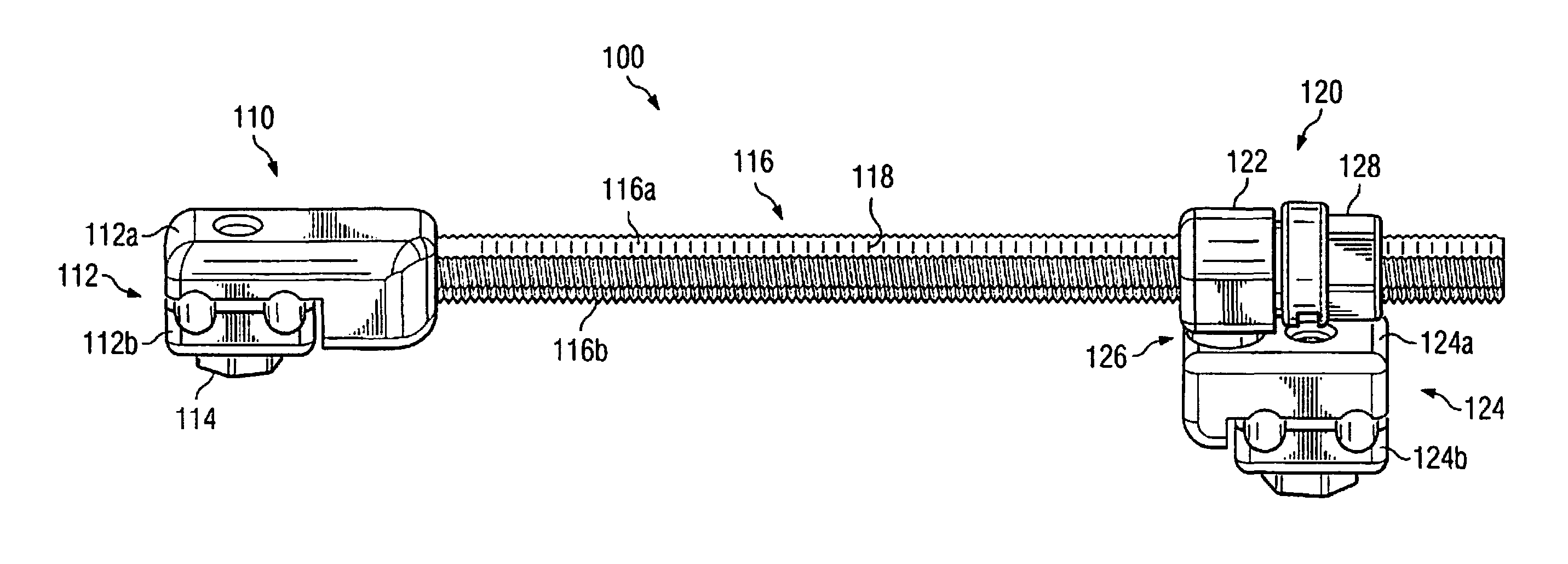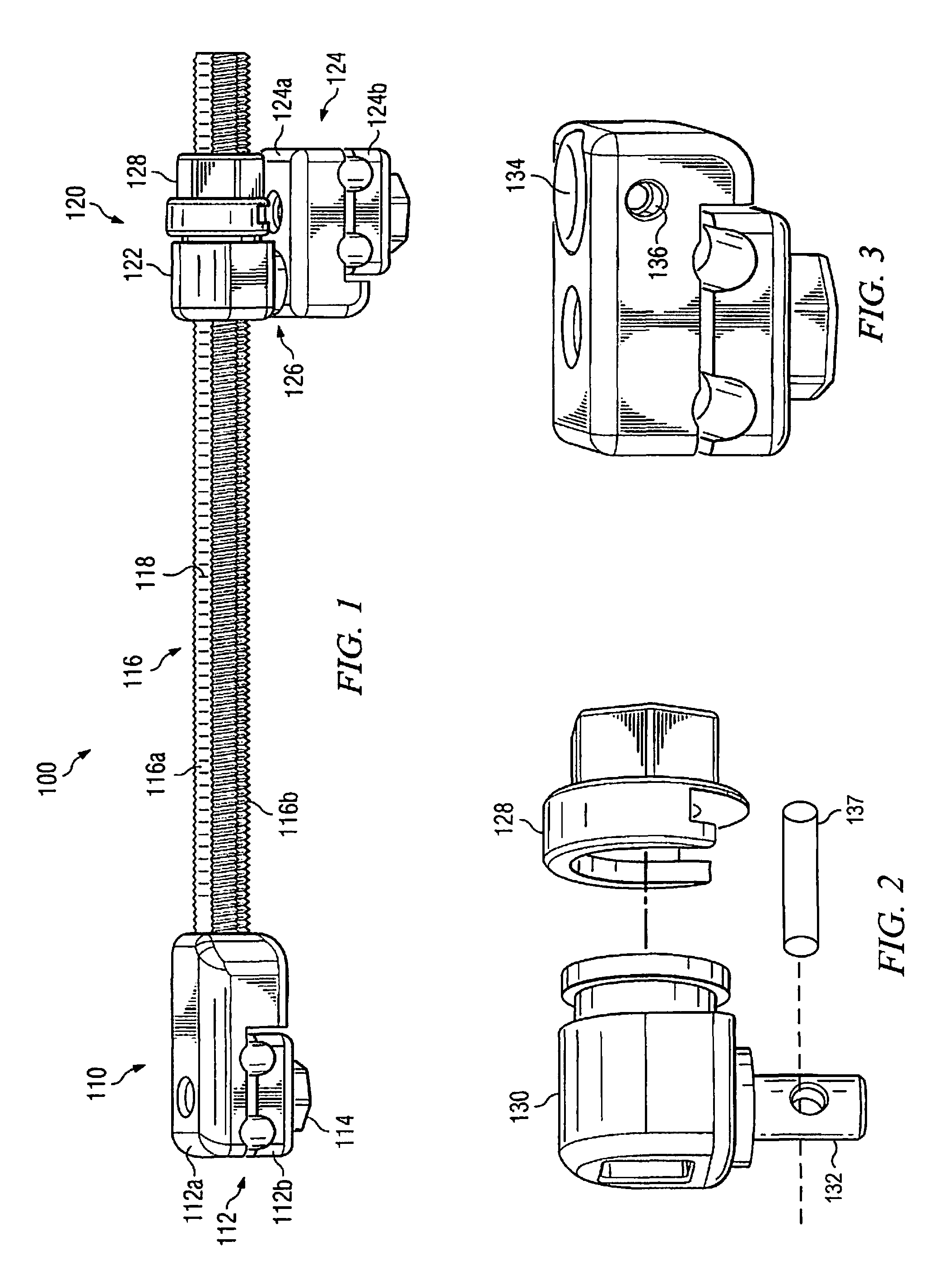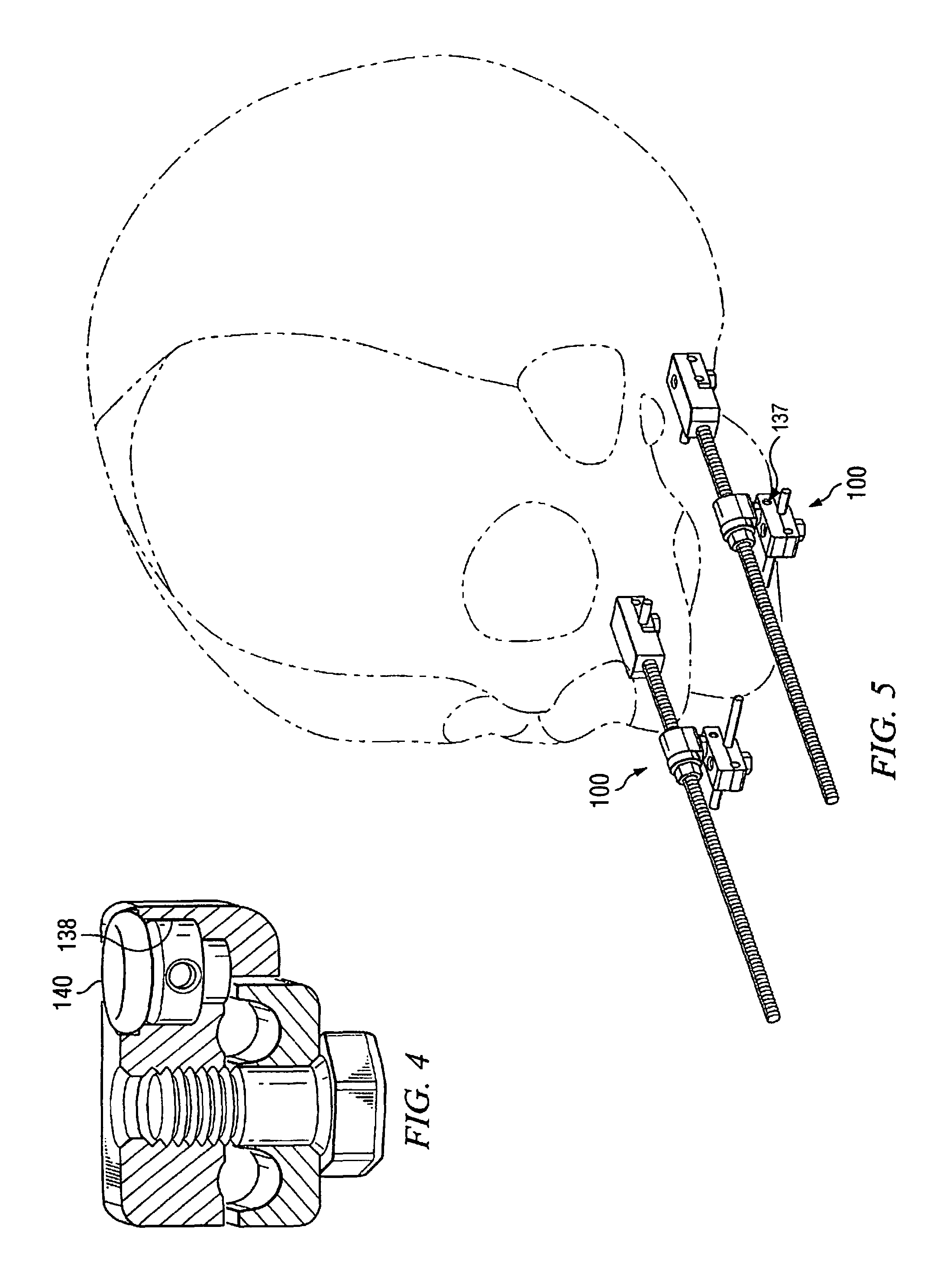External mandibular distractor with rotational clamp
a mandibular distractor and clamping technology, applied in the field of mandibular osteodistraction, can solve the problems of difficult movement of patients, difficult chewing or breathing, and deformations that are often psychologically distressing to patients, and achieve the effect of removing or redistributing unwanted forces
- Summary
- Abstract
- Description
- Claims
- Application Information
AI Technical Summary
Benefits of technology
Problems solved by technology
Method used
Image
Examples
Embodiment Construction
[0014]FIG. 1 illustrates an example embodiment of a mandibular distraction system 100. Mandibular distraction system 100 includes a posterior pin clamp assembly 110 rigidly coupled to one end of a rod 116 and an anterior pin clamp assembly 120 moveably coupled to rod 116 such that pin clamp assembly 120 may be adjustably positioned along the length of rod 116. As used herein, the terms anterior and posterior are used for the sake of explanatory simplicity to denote particular components of mandibular distraction system 100 with reference to an example situation wherein mandibular distraction system 100 is mounted on a mandible—the anterior portions being those closest to the point of the chin and the posterior portions being those closest to the mandibular joint. One of ordinary skill in the art will recognize that reference terms (e.g., anterior and posterior) are not meant to be limitive with respect to the placement of the components, nor are they meant to restrict the relative p...
PUM
 Login to View More
Login to View More Abstract
Description
Claims
Application Information
 Login to View More
Login to View More - R&D
- Intellectual Property
- Life Sciences
- Materials
- Tech Scout
- Unparalleled Data Quality
- Higher Quality Content
- 60% Fewer Hallucinations
Browse by: Latest US Patents, China's latest patents, Technical Efficacy Thesaurus, Application Domain, Technology Topic, Popular Technical Reports.
© 2025 PatSnap. All rights reserved.Legal|Privacy policy|Modern Slavery Act Transparency Statement|Sitemap|About US| Contact US: help@patsnap.com



